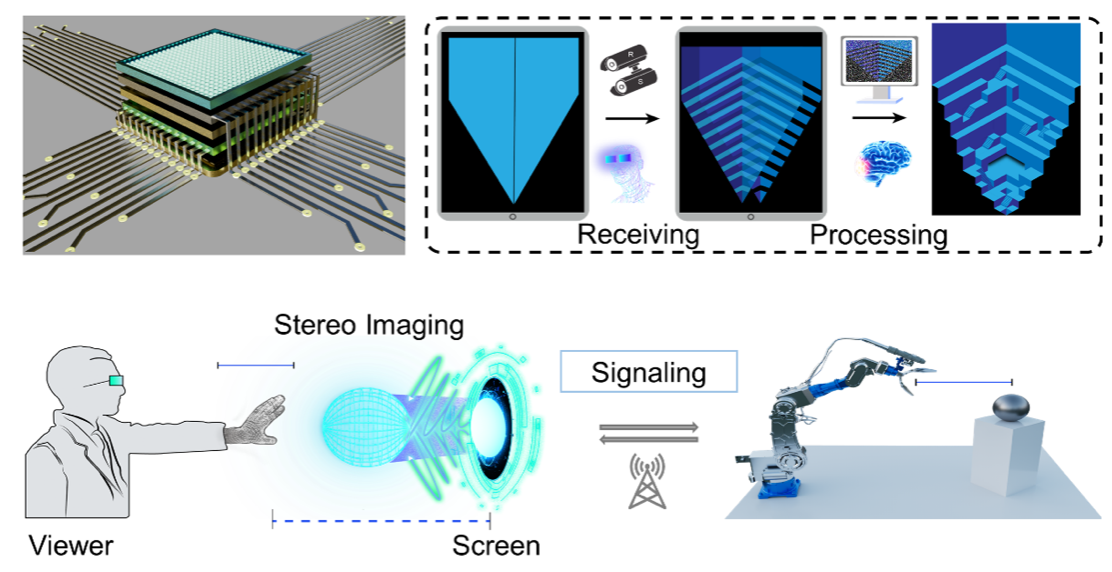A team led by Prof. ZHUANG Taotao and Prof. YU Shuhong from the University of Science and Technology of China (USTC) developed an adaptable three-dimensional (3D) display panel using circularly polarized luminescence (CPL) devices. Their research was published in Science Advances as cover story.
Adaptable 3D display holds significant importance in human-computer interaction and information transmission, as it substantially enhances information density and interaction dimensionality. CPL materials, which exhibit unique advantages in processability and device integration, enable the construction of electro-controlled 3D displays with tunable, high-performance chiroptical signals. CPL-based 3D display technology can achieve high-quality stereoscopic imaging across broader viewing ranges while minimizing visual fatigue, with smart polarized glasses. However, it remains a challenge to realize real-time dynamic modulation of luminescent units through digital signal input.
The orthogonal-CPL-emission display enables generation of 3D images with depth information through simultaneously delivering parallax images to both eyes wearing polarized glasses. Based on this binocular disparity principle, the researchers established a depth information detection system that achieves the reconstruction and visualization of depth information, enabling interactive manipulation through hand movements.
The team developed a series of CPL 3D display systems, via the integrated CPL- microdevices fabrication strategy—combining microelectronic printing and self-positioning capabilities. This system achieved the maximum luminescence dissymmetry factor (glum, a crucial parameter for evaluating CPL performance) of 1.0, under alternating electric field excitation. They then employed the system to a simulated trapped personnel rescue scenario. Using depth information provided by the 3D display, the team managed to remotely operate the robotic arms and rescue the trapped personnel while maximizing the safety of both trapped personnel and rescuers.

Schematic illustration of the adaptable spatial display and depth information interaction with high-performance CPL. (Image by Prof. ZHUANG’s team)
This work builds a crucial bridge between virtual and real-world environments, and holds broad practical prospects in scientific instrumentation, industrial equipment, medical electronics, and aerospace systems.
Paper Link: https://doi.org/10.1038/s41467-025-59264-6
(Edited by XIONG Xuan and ZHANG Yihang, USTC News Center)